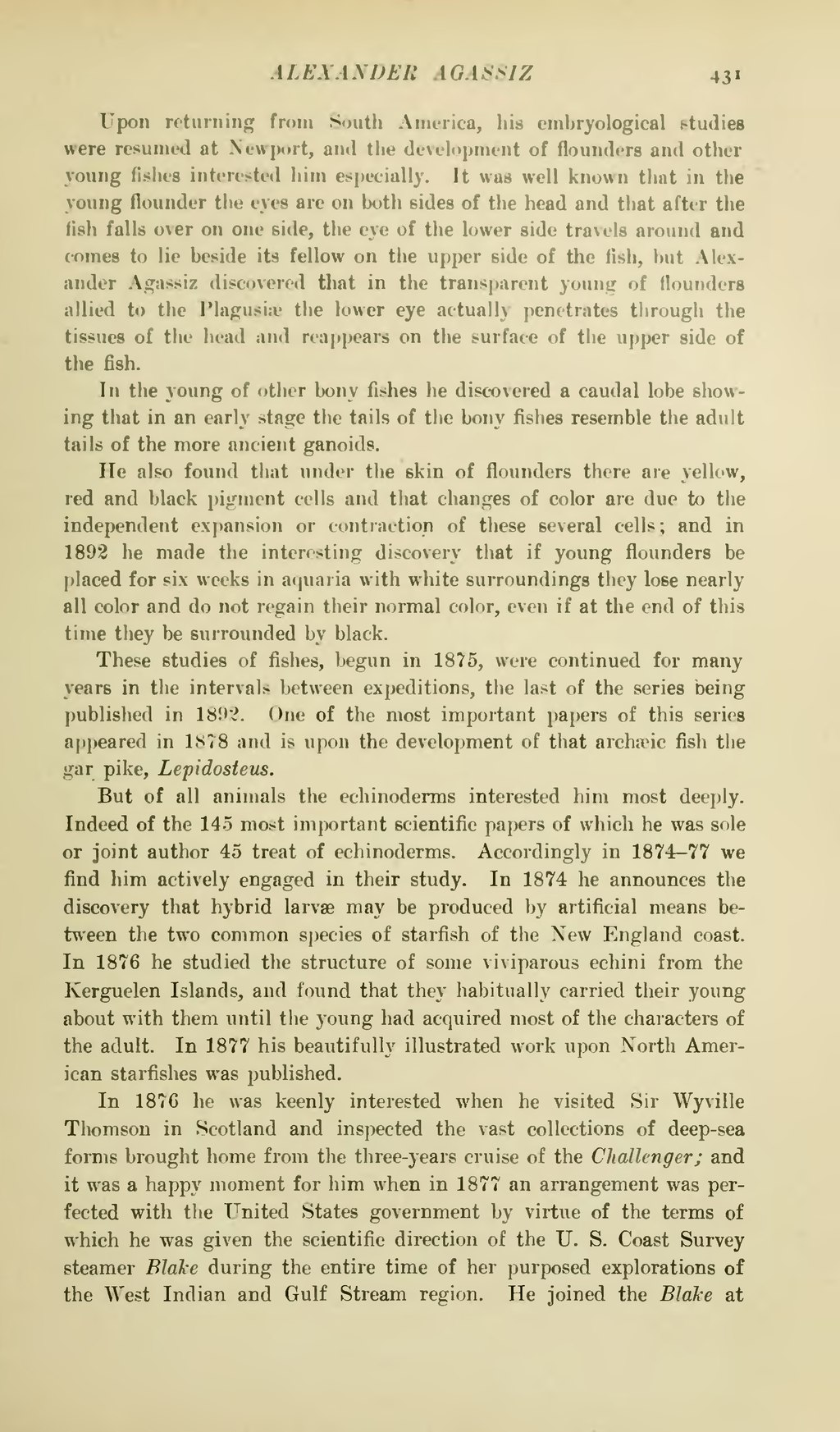Upon returning from South America, his embryological studies were resumed at Newport, and the development of flounders and other young fishes interested him especially. It was well known that in the young flounder the eyes are on both sides of the head and that after the fish falls over on one side, the eye of the lower side travels around and comes to lie beside its fellow on the upper side of the fish, but Alexander Agassiz discovered that in the transparent young of flounders allied to the Plagusiæ the lower eye actually penetrates through the tissues of the head and reappears on the surface of the upper side of the fish.
In the young of other bony fishes he discovered a caudal lobe showing that in an early stage the tails of the bony fishes resemble the adult tails of the more ancient ganoids.
He also found that under the skin of flounders there are yellow, red and black pigment cells and that changes of color are due to the independent expansion or contraction of these several cells; and in 1892 he made the interesting discovery that if young flounders be placed for six weeks in aquaria with white surroundings they lose nearly all color and do not regain their normal color, even if at the end of this time they be surrounded by black.
These studies of fishes, begun in 1875, were continued for many years in the intervals between expeditions, the last of the series being published in 1892. One of the most important papers of this series appeared in 1878 and is upon the development of that archæic fish the gar pike, Lepidosteus.
But of all animals the echinoderms interested him most deeply. Indeed of the 145 most important scientific papers of which he was sole or joint author 45 treat of echinoderms. Accordingly in 1874-77 we find him actively engaged in their study. In 1874 he announces the discovery that hybrid larvae may be produced by artificial means between the two common species of starfish of the New England coast. In 1876 he studied the structure of some viviparous echini from the Kerguelen Islands, and found that they habitually carried their young about with them until the young had acquired most of the characters of the adult. In 1877 his beautifully illustrated work upon North American starfishes was published.
In 1876 he was keenly interested when he visited Sir Wyville Thomson in Scotland and inspected the vast collections of deep-sea forms brought home from the three-years cruise of the Challenger; and it was a happy moment for him when in 1877 an arrangement was perfected with the United States government by virtue of the terms of which he was given the scientific direction of the U. S. Coast Survey steamer Blake during the entire time of her purposed explorations of the West Indian and Gulf Stream region. He joined the Blake at
